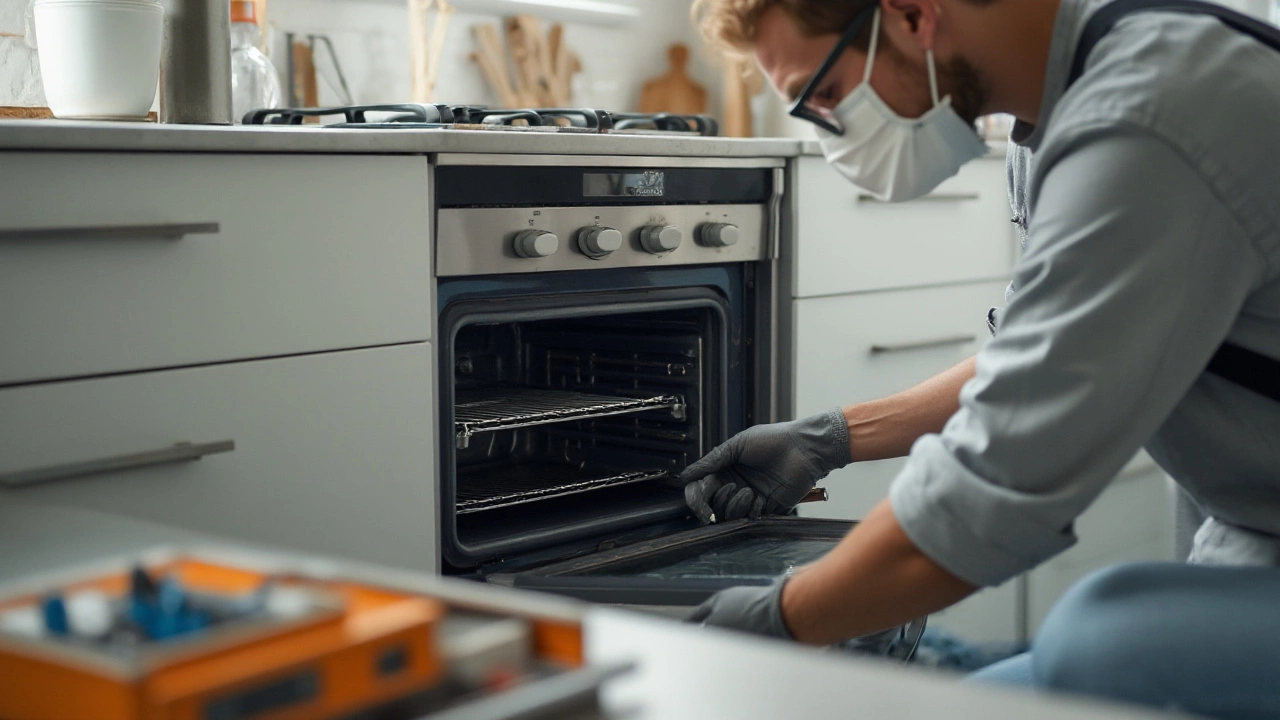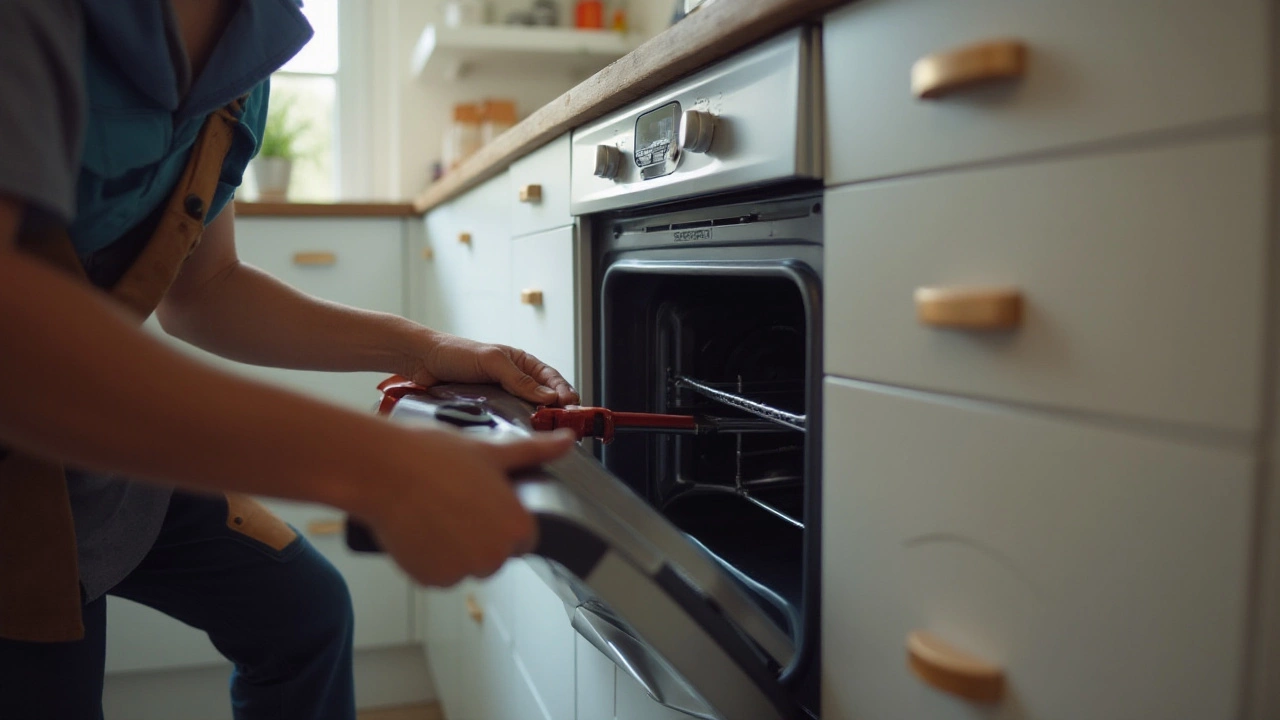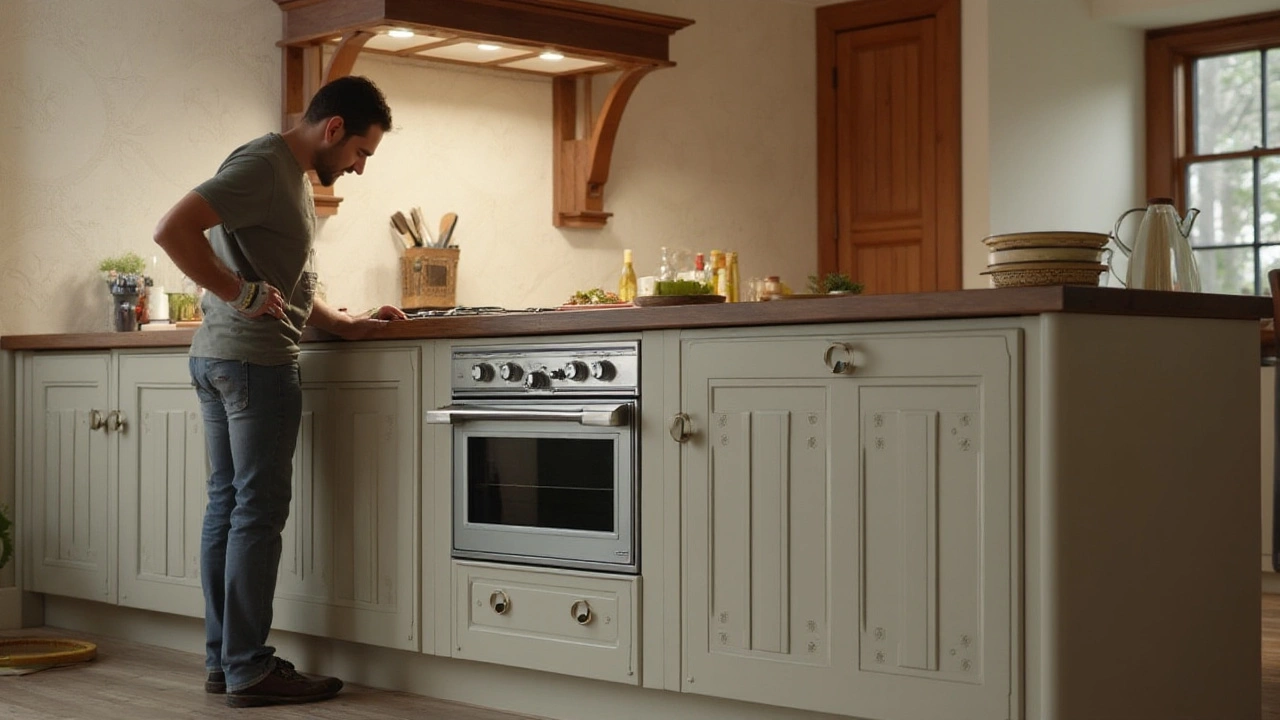How to Safely Replace Your Electric Oven at Home
 Oct, 25 2024
Oct, 25 2024
Taking on the task of replacing your electric oven can seem daunting at first, but with a bit of patience and preparation, it's a challenge that many homeowners can tackle successfully. Knowing what you're getting into can help make the process smoother and manageable.
In today's homes, having a modern, efficient oven is essential for daily life. Whether your old oven has reached the end of its lifecycle or you're simply upgrading to a new model, replacing it yourself can be rewarding. With this guide, you'll gain insights into the steps necessary to safely remove the old oven and install the new one, along with some pro tips for avoiding common mistakes.
Before diving into the nuts and bolts of oven installation, it's crucial to consider the safety aspects and the tools you'll need to get the job done. This article will provide the essentials to prepare you for a successful DIY project.
- Understanding Electric Oven Installation
- Essential Tools and Preparations
- Step-by-Step Replacement Guide
- Safety Tips and Common Mistakes
Understanding Electric Oven Installation
Stepping into the world of electric oven replacement might appear intimidating, but a little knowledge goes a long way in making this process feel like a walk in the park. Let's break it down to see what it really involves. When you think about installing an oven, it's not just about sliding it into a slot and plugging it in. It's essential to have a grasp of the electrical requirements and to prepare your kitchen space accordingly. Knowing the electrical ratings of the previous and new ovens is a must; you don't want any surprises when it comes to power compatibility. Ensure that the circuit is suitable and meets the amperage needs of your new oven.
The first step in DIY oven installation is to understand the different types of ovens, as this determines the installation method. Built-in wall ovens, for example, require different handling compared to freestanding ranges. Each has its own set of installation instructions, typically provided by the manufacturer, but having a clear understanding of these differences will make the process smoother. It's also wise to look into building codes in your area. Local codes may specify certain rules about wiring and installation that need to be followed.
According to the National Electrical Code, it’s crucial for home installations to adhere to strict wiring specifications to prevent any hazards, stressing the importance of safety in DIY endeavors.
Your kitchen layout matters too. The space around the oven needs sufficient clearance to ensure safe operation and effective ventilation. Having too little space can lead to overheating and affect the oven's efficiency. Consider the dimensions carefully and compare it with your new unit before proceeding. Also, keep in mind that kitchen appliance repair sometimes leads to unexpected discoveries; perhaps the cabinetry needs modification or the flooring might require reinforcement. These are essential considerations to ensure a proper fit and function.
Determining whether you need a hardwired connection or plugging directly into an outlet is another facet of electric oven installation. Most ovens require a direct connection to a dedicated circuit to handle their electrical loads safely. This could mean running new wires if your existing connections don't match the oven's specifications. Bear in mind, a professional assessment could be helpful at this stage because mishaps with electrical installations can be not only costly but dangerous. As you gear up for this hands-on project, familiarize yourself with basic electrical wiring fundamentals to reduce the risks. A high degree of caution will help you avoid potential hazards that can come with an incorrect installation.

Essential Tools and Preparations
Embarking on the journey of DIY oven installation requires some groundwork, and having the right tools lined up is half the battle won. Before you pull out that old oven, you'll need to ensure you've got all the essentials on hand. A simple and effective list includes a screwdriver set, a multimeter to check electrical connections, a level to ensure your new appliance is properly aligned, and a wrench set for those stubborn bolts. It might sound basic, but each tool plays a significant role in maintaining safety and precision throughout the process. After all, moving and connecting a major appliance like an electric oven is no small feat, and underestimating the importance of the right tools can lead to mishaps.
Not only should you focus on the tools, but preparations in your kitchen space are also key. Clear the path to your electrical panel; you'll need easy access to safely turn off power before you start working. Next, ensure there is ample space for maneuvering the appliance in and out of its spot. While modern ovens often come in standard sizes, older kitchen configurations might present unforeseen complications. Measure your existing appliance and kitchen cutout to avoid nasty surprises on installation day. According to the National Kitchen and Bath Association, ensuring correct measurements is critical and "can prevent expensive mistakes and unexpected modifications."
One aspect often overlooked is gaining an understanding of the wiring requirements. Electric ovens usually connect to a dedicated circuit, meaning it’s crucial to know what you're dealing with before detachment. Consulting your new oven’s installation manual will equip you with the specifics tailored to your model. Additionally, investing in protective gear like insulated gloves and goggles can make a world of difference, offering a vital layer of protection against electric shocks or debris. When adventure meets preparedness, the task transitions from daunting to doable.
“A prepared DIYer is a happy DIYer,” says home repair expert Ashley Williams. “Having a plan and the right tools can turn a complex task into an achievable goal.”
It's equally important to consider if you’ll need any help, as the process might require an extra pair of hands. While solo projects are rewarding, conquering an electric oven replacement with a sidekick isn’t a bad idea, especially when lifting and positioning heavy equipment. Let these tools and preparations serve as your armor and guide, readying you for a seamless and satisfying installation experience.

Step-by-Step Replacement Guide
Replacing your electric oven at home doesn’t have to be a Herculean task. Let's start by safely removing the old unit. Begin by ensuring the power is off at the main breaker; this is crucial as it prevents electrical accidents. Once confirmed, open the oven door and locate the screws securing it to the cabinetry. Usually, these are found under the lip or the ceiling of the oven itself. With a screwdriver, carefully remove these screws while holding the oven steadily, as it can be surprisingly heavy. Gently slide the oven out while being mindful of any wires still connected.
After safely removing the unit, prepare the area for the new installation. Check that the wiring and electrical outlet are in good condition and adhere to the specifications of your new unit. It’s essential to ensure the area is clean and free from obstructions, as this will facilitate a smoother installation. Installing the new oven involves aligning it correctly with the cabinet cutout, ensuring it fits snugly without forcing it into place. Proper alignment is not just about aesthetics but critical for efficient energy use and safety.
With the oven in position, connect the electrical wires as outlined in the manufacturer’s instructions. Typically, this step involves attaching the color-coded wires using wire nuts: black to black, white to white, and green to the ground wire. It might sound straightforward, but it requires a meticulous approach to ensure everything is secure, avoiding any future electrical mishaps. Test the connection by using a multimeter if you're comfortable with it, or consider getting this part checked by a professional.
"DIY enthusiasts often aim for precision and patience over speed. Rushing through this process can lead to errors and may compromise safety," says Jeffrey Stevens, a renowned home improvement expert.
With wiring done, gently push the new oven into place, ensuring there’s enough room for ventilation as per the manufacturer's guidelines. Most ovens come with dedicated brackets that must be screwed into the cabinetry to secure the oven properly. Once everything is in order, turn the power back on at the breaker. Test the unit by running a quick bake cycle to ensure all functions are operational. Congratulations! You've now successfully completed a DIY oven installation, which not only brings a sense of achievement but can also save some money.
| Tools | Purpose |
|---|---|
| Phillips Screwdriver | For removing and securing screws. |
| Multimeter | To test electrical connections. |
| Wire Nuts | To safely connect wires. |

Safety Tips and Common Mistakes
Embarking on a DIY project such as replacing an electric oven not only requires a keen sense of adventure but a strong emphasis on safety precautions. It's crucial to understand that handling appliances involves certain risks, but these can be effectively managed with the right mindset and preparation. First and foremost, always ensure that the power to the oven is completely turned off at the circuit breaker before beginning any work. This is not just a recommendation but a hard-and-fast rule to eliminate the risk of electric shock. Electric ovens operate on 240 volts, a lethal level of electricity.
Moreover, when you are in the process of removing or installing the appliance, having an extra pair of hands can be immensely beneficial. Ovens are heavy, large, and cumbersome, posing a risk of personal injury like strained muscles or pinched fingers if attempted solo. Consider using a dolly or a hand truck if you're alone, and when you’re maneuvering in tight spaces, practice caution to prevent damaging floors or cabinetry systems.
Electric oven replacement isn't just about physical safety—it also involves ensuring connections are correct and secure. Double-checking that you've connected wires according to the manual is essential in avoiding malfunction or fire hazards. Many a time, DIY enthusiasts overlook grounding; this is a crucial mistake. Grounding the oven minimizes the chances of electrical faults, protecting both the appliance and the user.
Now, let's touch on some common mistakes that might sneak up unexpectedly. One frequent error is neglecting the measurement of the space where the oven fits. Before purchasing a new model, take into account the exact dimensions of the oven cavity in your kitchen. Overlooking this might result in appliances that either don’t fit snugly or are oversized, leading to logistical headaches and added expense.
"Proper preparation prevents poor performance," notes an appliance expert from HomeServe USA, underscoring the importance of planning in DIY projects.
An often overlooked detail is the ventilation around the oven. Proper ventilation ensures that heat doesn't build up inside the cabinet, causing overheating or damage to surrounding fixtures. Don’t compact insulation material or apply caulk around your appliance. Allow it to 'breathe' to function optimally. Lastly, ensure that there's a clear inspection of gas lines, even when dealing with electric models, if the previous model involved gas lines. This can prevent future emergencies.
For the DIY enthusiast, knowledge is empowerment, and having familiarity with these safety tips and avoiding prevalent errors can make replacing your oven an exciting and safe endeavor. It's always wise to double-check your work and don't rush the process. Patience pays off in successfully completing a complex task like this.
